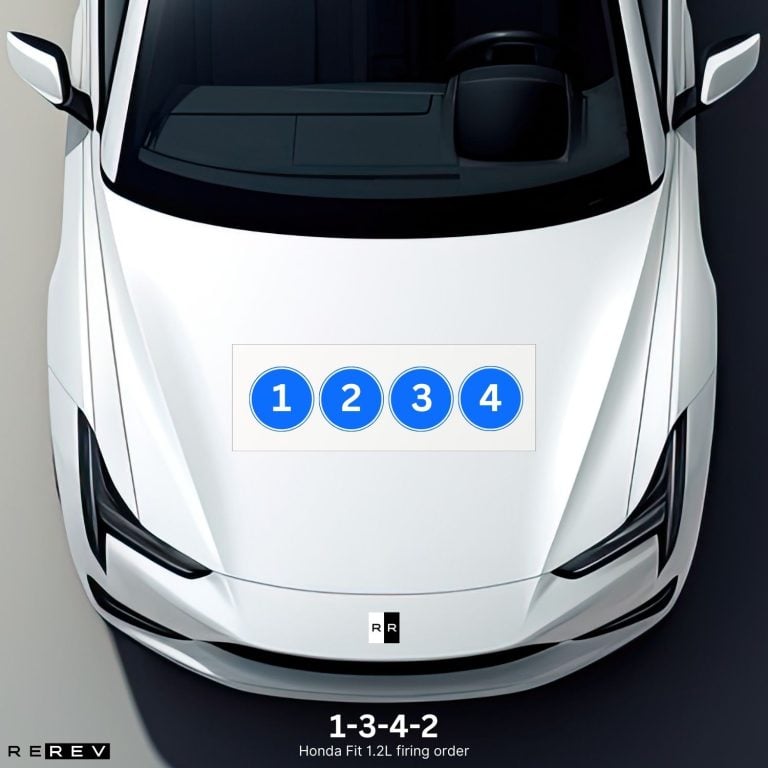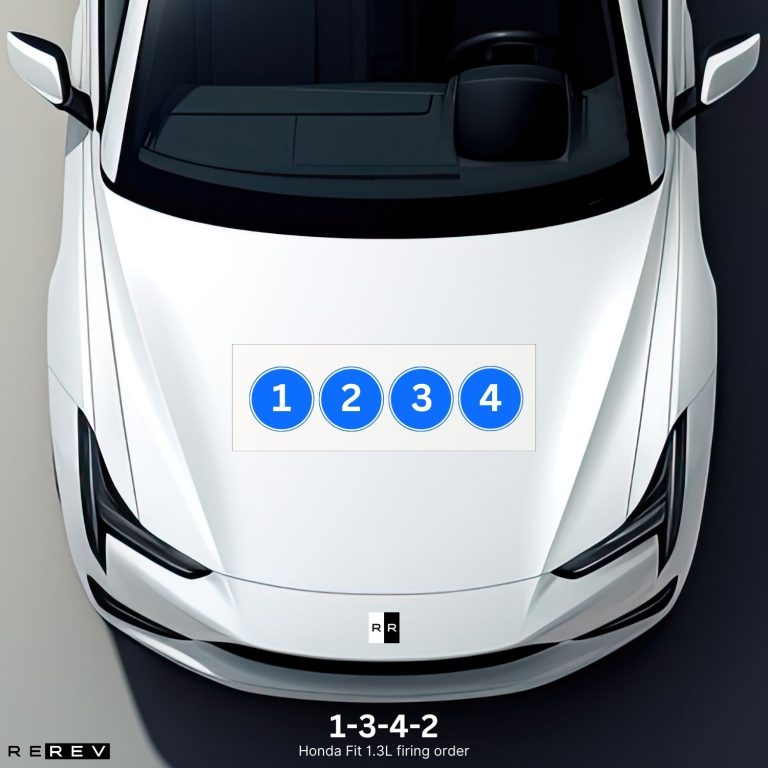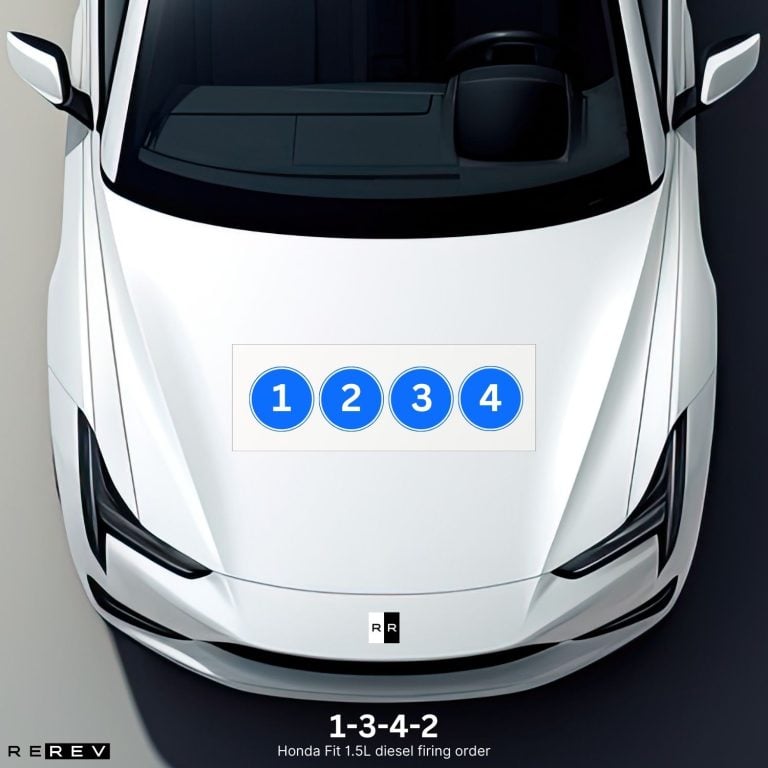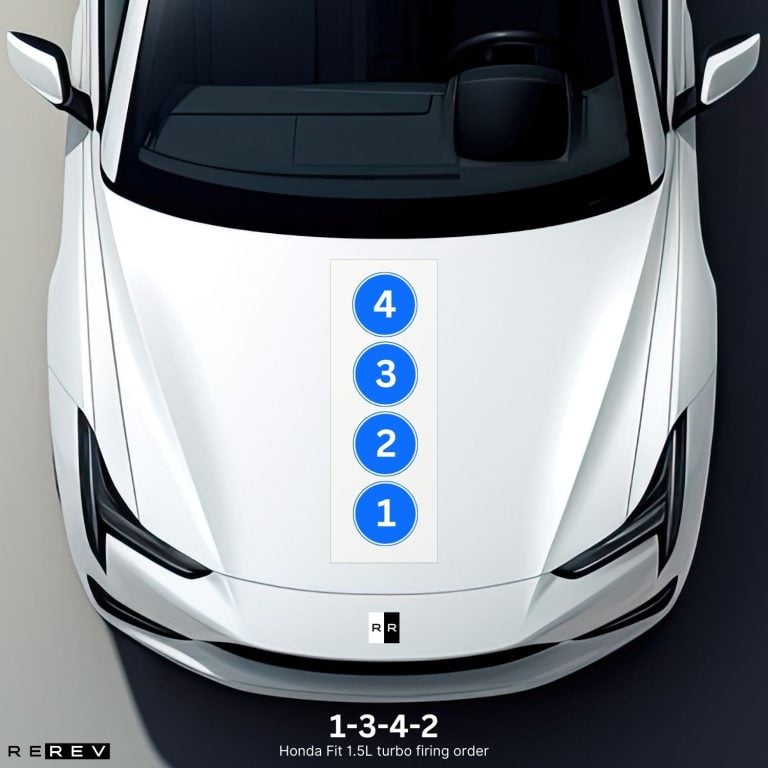Honda Fit (2001-2023) firing order — diagram & guide

If you own a Honda Fit, you’ll know how versatile these compact vehicles can get with their practical design and reliable Honda engines. Still, there comes a time when you have to check up on the engine’s performance and replace the spark plugs and coils to keep it running as smoothly as on day one.
For those of you with the right tools and knowledge, it’s much better to do it yourself, so let us lead the way with this guide on Honda Fit (2001-2023) firing order. We’ll cover everything you need to know to properly address the engine issues and prevent misfires from the firing order of each engine to its cylinder positions and layout.
| FIT YEARS | ENGINE | FIRING ORDER |
|---|---|---|
| 1st Gen (2001-2006) | 1.2L | 1-3-4-2 |
| 1.3L | 1-3-4-2 | |
| 1.5L | 1-3-4-2 | |
| 2nd Gen (2007-2012) | 1.2L | 1-3-4-2 |
| 1.3L | 1-3-4-2 | |
| 1.5L | 1-3-4-2 | |
| 3rd Gen (2013-2019) | 1.3L | 1-3-4-2 |
| 1.5L | 1-3-4-2 | |
| 1.5L Diesel | 1-3-4-2 | |
| 4th Gen (2020-2023) | 1.3L | 1-3-4-2 |
| 1.5L Turbo | 1-3-4-2 |
First-generation Honda Fit (2001-2006) firing order
The first-gen model of the Honda Fit brings some engine options that more or less stuck with the model by the end of the fourth-gen production. It laid down the base for further improvements, but more or less the same engines were used in all the generations, so let’s see what the firing orders are all about.
Honda Fit 1.2L firing order

The 1.2-liter four-cylinder engine was a base option for the Honda Fit, and this one featured the good-old 1-3-4-2 firing order. To be precise, this is the firing order that all the Fit engines have used, including even the diesel engine that appeared in the latest generation.
Only nuances separate these engines, and the first cylinder of the 1.2L four-cylinder is on the left side. The cylinders continue toward the right as cylinder numbers 2, 3, and finally, 4 come right after the first one toward the right.
Honda Fit 1.3L firing order

The Honda Fit 1.3L firing order is 1-3-4-2, and this engine came right after the 1.2-liter one. In fact, it was based on the same Honda “L” engine block so these two share quite a few design features. This also includes the cylinder layout as the cylinders are arranged from 1 to 4 going in a straight order from left to right.
Honda Fit 1.5L firing order

As the final engine option for the first-gen Fit model, the Honda Fit 1.5L firing order is 1-3-4-2. However, this engine is a bit different from the previous ones since the cylinder configuration could go from the first cylinder at the front of the engine, to the fourth cylinder at the rear.
However, Honda Fit models have been produced with the 1.5-liter engine being either oriented this way, or from left to right. So, if your Fit has an engine with cylinders going from left to right, the first cylinder would be the one on the left side, and the rest follow up sequentially.
Second-generation Honda Fit (2007-2012) firing order
The second-gen model of the Honda Fit also used pretty much the same engine options as the first one, so there are no differences there. At this point, engines like the 1.2L and 1.3L four-cylinder were still offered, along with the refreshed version of the 1.5-liter engine.
So, they all featured a 1-3-4-2 firing order and we won’t discuss them any further as we’ve already gone through these.
Third-generation Honda Fit (2013-2019) firing order
The third generation is when things started to get interesting since Honda also introduced the first diesel engine used in the Fit model. Besides the regular 1.3-liter and the 1.5-liter engine, there was also a 1.5-liter diesel engine added and this one had a slightly different configuration.
Honda Fit 1.5L diesel firing order

If you own a diesel-powered Fit, you should know that this one is a bit different than the petrol engine of the same displacement. The Honda Fit 1.5L diesel firing order is 1-3-4-2 and this one is similar to the petrol engine in that regard.
However, the cylinders are always oriented from the first one on the left side to the fourth one on the right side, unlike the petrol 1.5-liter engine where cylinders in some models were numbered front to back.
Fourth-generation Honda Fit (2020-2023) firing order
Finally, we came to the fourth-gen model of the Honda Fit and this one also had the signature 1.3-liter engine. However, this is the first generation where the 1.5-liter turbocharged engine was introduced and this one was a bit different than the regular 1.5-liter engine, so let’s take a look.
Honda Fit 1.5L turbo firing order

The Honda Fit 1.5L turbo firing order is 1-3-4-2, but this engine is exclusively mounted with the cylinders going front to rear. So, you’ll find the first cylinder at the front of the engine, with cylinders 2, 3, and 4 following up toward the rear end of the engine.
Our take
Overall, the Fit has been a great companion for all those looking for a reliable compact city car, and it’s largely due to reliable four-cylinder engines.
Now that you know a bit more about their firing sequence and cylinder numbering, we are sure you’ll be able to keep up with the engine’s maintenance yourself, so feel free to use our guide as a manual for that.